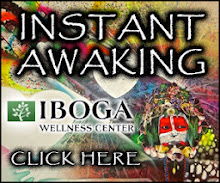| Online: | |
| Visits: | |
| Stories: |
How Ayahuasca Can Revolutionize Psychotherapy
 Olivia LaVecchia, City Pages
Olivia LaVecchia, City Pages
Waking Times
A look at the psychoactive brew that brings users a spiritual payoff for their “work”
Just before dusk, 18 strangers entered a yurt on a Midwestern homestead. Peruvian tapestries decorated the walls of the large, round structure, and rattles stood poised for ceremony.
The participants — professional men and women ages 35 to 65 — put on comfortable clothing and set up sleeping bags, pillows, and blankets. Everyone got a plastic bucket, cheerfully colored in green, red, or blue.
“It looks like a big pajama party,” joked the host, Kim.
The shaman, a North American who had trained in  Many of the men had struggled with alcoholism and depression prior to joining the church, Grob learned. They credited ayahuasca with transforming their outlook. “In some cases,” Grob says, “they felt like it had saved their lives.”
Many of the men had struggled with alcoholism and depression prior to joining the church, Grob learned. They credited ayahuasca with transforming their outlook. “In some cases,” Grob says, “they felt like it had saved their lives.”
When the researchers left Brazil and started processing their data, the blood work came back with one of the project’s most startling discoveries: The long-term ayahuasca users showed higher levels of the transporters of serotonin, the brain chemical that regulates mood.
“That’s the target that antidepressants work on, and here it was significantly elevated in the drinkers,” McKenna says.
Deficits in serotonin transporters are also connected with problems like alcoholism and depression — the same issues the 15 subjects said the ayahuasca had helped cure.
“Here we have a medicine that apparently reverses these deficits, something no other medicine is known to do,” explains McKenna. “And there’s also a correlation to behavioral change. You can’t say it caused it, but there’s definitely a correlation.”
Today, 20 years after the study, McKenna is preparing to revisit the findings. Within a year, he aims to raise enough money to fund a new study, this time in  Since Grob and McKenna’s study in 1993, some limited research had been done on ayahuasca: Scientists had performed brain scans of ayahuasca users, and administered freeze-dried ayahuasca in a lab. But no one had followed up on ayahuasca’s therapeutic potential. Thomas and his team were ready to continue the work.
Since Grob and McKenna’s study in 1993, some limited research had been done on ayahuasca: Scientists had performed brain scans of ayahuasca users, and administered freeze-dried ayahuasca in a lab. But no one had followed up on ayahuasca’s therapeutic potential. Thomas and his team were ready to continue the work.
The group set up in the tribe’s longhouse, a spacious wooden structure with a stove in the middle and straw on the floor. Twelve members were participating in the first ceremony, and that night, before they drank, Mate led them in conversation about their addictions.
“When they were talking about trauma, for many of them, that was the first time they ever shared that with anybody,” Mate says. “They were entering into deep pain.”
Before the retreat, Thomas and his team administered psychiatric evaluations to measure the 12 participants on factors like hope, quality of life, mindfulness, and emotional regulation. After the ceremony, researchers repeated the tests — first two weeks later, then four weeks, then once per month for half a year.
The results, which they published in June in the journal Current Drug Abuse Reviews, came back promising. Alcohol, tobacco, and cocaine use decreased among the participants. On the psychological surveys, the subjects’ quality-of-life scores increased, as did the ratings for mindfulness, empowerment, outlook, and hopefulness.
At the six-month mark, the team also interviewed 11 of the study participants, and asked them to rate the experience on a scale from 1 to 10. The mean response came back at 7.95. One 30-year-old man told the researchers, “With my last experience with the ayahuasca, I really faced myself. Like, my fear, my anger. Which really, I think is a big part of my addictions…. I wish I was introduced to it like 20 years ago. It could have saved me a lot of time and trouble.”
The city of 
~~ Help Waking Times to raise the vibration by sharing this article with the buttons below…
The post How Ayahuasca Can Revolutionize Psychotherapy appeared first on Waking Times.
Source: http://www.wakingtimes.com/2014/07/19/ayahuasca-can-revolutionize-psychotherapy/




